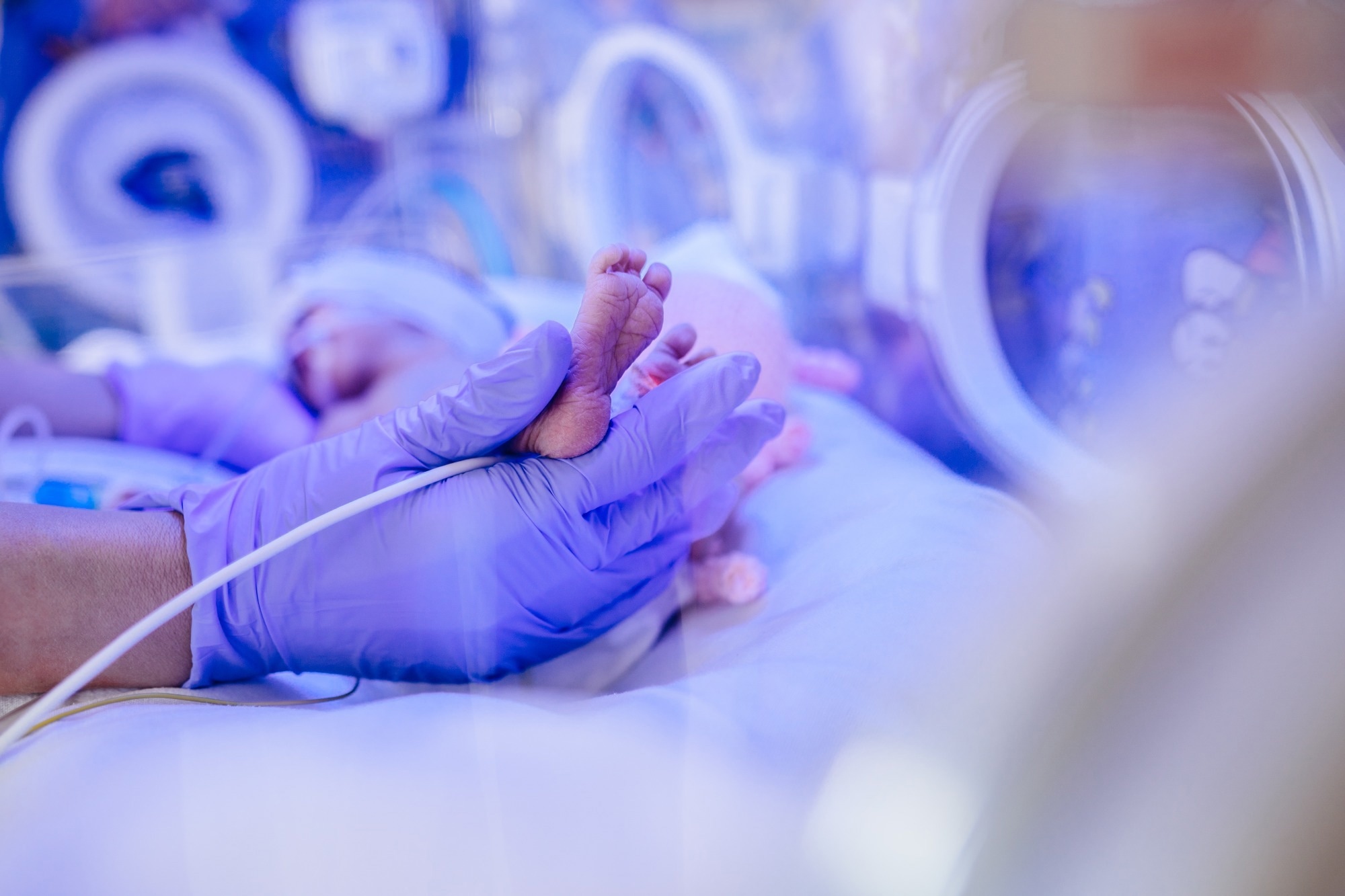In a recent article in Science Immunology, researchers used the lymphocytic choriomeningitis virus (LCMV) model to examine virus propagation within central nervous systems (CNSs) during systemic infection.
They evaluated the structural and functional differences in the CNS borders of four- and eight-week-old adult mice (P28) and male & female postnatal day seven (P7) neonates using the LCMV model as it does not destroy CNS barriers. Moreover, this model facilitated observing pathogens as they invaded the CNS from the periphery.
 Study: Immaturity of immune cells around the dural venous sinuses contributes to viral meningoencephalitis in neonates. Image Credit: Iryna Inshyna/Shutterstock.com
Study: Immaturity of immune cells around the dural venous sinuses contributes to viral meningoencephalitis in neonates. Image Credit: Iryna Inshyna/Shutterstock.com
Background
Multiple barriers, including the blood-brain barrier (BBB) and blood–cerebrospinal fluid (CSF) barrier (BCSFB), protect the CNS from hematogenous pathogens that cause meningitis.
Yet, systemic pathogens sometimes invade the CNS, leading to uncontrolled immune cell trafficking. Thus, it is crucial to explore how systemic pathogens breach CNS barriers.
In previous studies, researchers examined the perivascular spaces of the choroid plexus (CP) and leptomeninges as primary sites of systemic virus entry into the CNS. However, they based the outcomes on disease-progressed human models infected by pathogen via intracranial inoculation of pathogen models, not the natural infection route.
Other studies elucidated long-term neuroinfections, which did not represent real-world CNS infections. So, in this study, the researchers adopted systemic injection of LCMV in a murine model.
Furthermore, studies have not described how the CNS border-associated macrophages, including major histocompatibility complex class II (MHCII)hi and MHCIIlo macrophages, initially serve as the immune barrier but subsequently facilitate monocyte infiltration across the CNS border tissues during pathogen invasion.
About the study
In the present study, researchers tested the hypothesis that the CNS barriers of neonatal mice are more prone to systemic entry of microbes than young adult mice.
They intraperitoneally injected the Armstrong strain of LCMV, a noncytolytic rodent virus that causes meninges in mice, and then observed their CNS barrier tissues.
Before performing single-cell ribonucleic acid sequencing (scRNA-seq) to characterize immune and endothelial cells (ECs), the researchers examined the differences in their resident immune cells. They compared distinct macrophage populations in the dura of neonates and young adult mice.
In addition, they used blocking antibodies or diphtheria toxin to deplete specific immune cell populations in the CNS borders and examine macrophages recruited to the perisinus in neonates.
Further, they confirmed the depletion of targeted immune cells in the dura by flow cytometry (FC) analysis and immunofluorescence staining (IFS) analysis.
The team also identified critical cell types controlling the viral invasion of CNS border tissues. Finally, they elucidated the mechanisms by which perisinus MHCIIhi macrophages protect the CNS from systemic LCMV infection by investigating how adaptive immunity controls viral propagation. All through quantification and analysis, samples used for experiments were unblinded.
Results
Using the Armstrong strain of LCMV, the researchers demonstrated that MHCIIhi macrophages at the perisinus of the dura prevent early invasion of CNS by viruses by activating the type 1 interferon (IFN)-mediated signaling.
These myeloid cells are CD206 negative or CD206 low and are recruited from circulating blood in a leukocyte adhesion molecule–dependent manner in neonate and adult mice.
Moreover, adaptive immune cells played a minor protective role during this infection phase. However, inadequate establishment of this crucial immune barrier at the perisinus due to immaturity (as in neonates) or their poor recruitment eventually facilitated LCMV entry to the CNS from the systemic circulation.
Consequently, neonates were highly susceptible to viral meningoencephalitis, and the mortality of neonatal but not adult mice was high post-infection.
For a long time, researchers debated how systemic pathogens entered through CNS border tissues having distinct compartments with varying accessibility to the efferent and afferent arms of the immune system.
This study helped us understand that venous sinus ECs contribute to establishing a distinct immune barrier at the dura after birth.
Consistent with a previous report, the authors also noted that the perisinus was not a tight barrier, especially its subarachnoid space; thus, it was susceptible to pathogen invasion from the systemic circulation.
Previous studies claimed pathogen entry via the BBB and BCSFB. However, this study favored the perisinus to LM-CC route of pathogen invasion.
Conclusions
Overall, the study results remarkably showed what caused fatal meningoencephalitis in neonatal mice. The immaturity of the perisinus innate immune barrier, mainly comprised of MHCIIhi macrophages, facilitated viral entry to the CNS from the dura during systemic viral infection.
Thus, establishing and maintaining the perisinus innate immunebarrier is crucial to prevent viruses-induced CNS infections.
Future studies should examine the role of MHCIIhi macrophages at the perisinus in conferring protection against systemic infection by a cytopathic parasite, Trypanosoma brucei, that destroys CNS barrier tissues.
Journal reference:
-
Kim, Y.-C., Ahn, J. H., Jin, H., Yang, M. J., Hong, S. P., Yoon, J.-H., Kim, S.-H., Gebre, T. N., Lee, H. J., Kim, Y.-M. and Koh, G. Y. (2023) Science Immunology, 8(88). doi: 10.1126/sciimmunol.adg6155. https://www.science.org/doi/10.1126/sciimmunol.adg6155